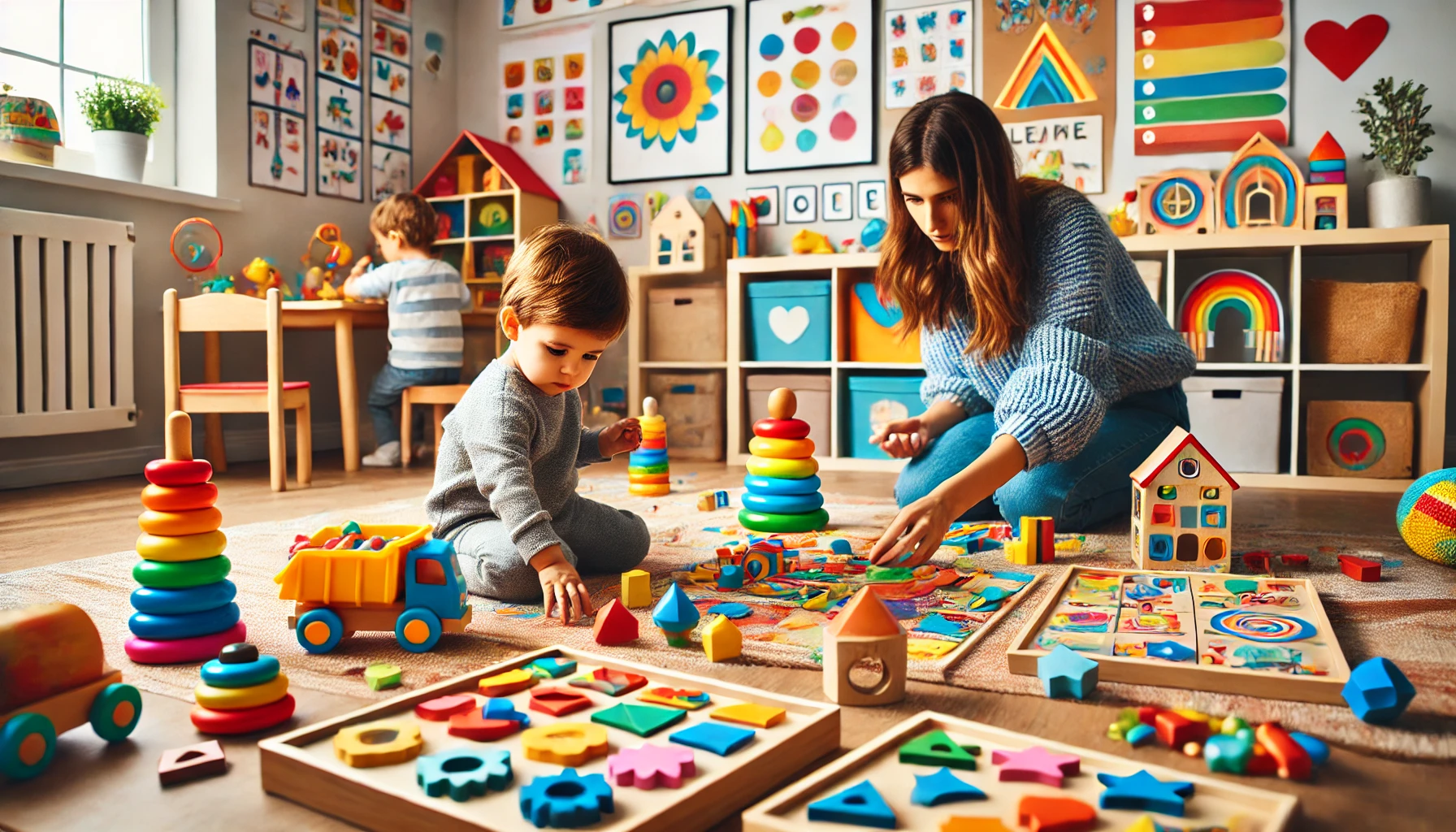Teaching young children about colors and shapes is an essential step in their early education. Recognizing colors and identifying shapes helps build visual perception, language development, and problem-solving skills. The best way to teach these concepts is through interactive and playful activities that keep children engaged.
In this guide, we’ll explore fun and effective ways to teach colors and shapes to toddlers and preschoolers, making learning an exciting experience.
Why Are Colors and Shapes Important in Early Learning?
Before diving into activities, let’s understand why these skills matter.
- Cognitive Development: Helps children categorize objects and recognize patterns.
- Language Growth: Expands vocabulary by learning color names and shape descriptions.
- Early Math Skills: Shapes lay the foundation for geometry, while colors help with sorting and grouping.
- Fine Motor Development: Many activities, like coloring and shape sorting, improve hand-eye coordination.
The earlier children start learning colors and shapes, the easier it becomes for them to develop problem-solving and critical thinking abilities.
Step 1: Introducing Colors and Shapes Through Everyday Life
One of the simplest ways to teach colors and shapes is by incorporating them into daily routines.
- During Meals: “Can you find the red apple?” or “What shape is your sandwich?”
- Getting Dressed: “Let’s put on your blue shirt!” or “Your socks have circles on them.”
- Outdoor Walks: “Look at the green trees!” or “The stop sign is an octagon!”
- Bath Time: Use colorful bath toys and ask, “What color is your duck?”
Children learn best through repetition and real-life experiences, so these small daily conversations help reinforce their understanding.
Step 2: Fun Activities for Teaching Colors
1. Color Sorting with Household Objects
What You Need:
✔ Colorful toys, buttons, or blocks
✔ Small baskets or bowls
How to Play:
- Place different-colored objects in a pile.
- Ask your child to sort them into matching color groups.
- Name each color as they sort.
This game helps children develop visual discrimination and fine motor skills.
2. Color Hunt Around the House
What You Need:
✔ A set of colored cards or papers
How to Play:
- Hold up a color card and ask your child to find an object of that color in the house.
- Encourage them to bring it back and name the color.
- Make it a timed challenge for extra excitement!
This activity turns learning into an interactive treasure hunt that keeps kids active and engaged.
3. DIY Color Mixing Experiment
What You Need:
✔ Red, blue, and yellow food coloring
✔ Clear cups of water
✔ Spoons for mixing
How to Play:
- Mix primary colors together and observe the results (e.g., blue + yellow = green).
- Let your child predict what will happen before mixing.
- Discuss how new colors are created.
This hands-on science experiment teaches color combinations in a magical and memorable way.
Step 3: Fun Activities for Teaching Shapes
1. Shape Matching with Everyday Objects
What You Need:
✔ Cut-out paper shapes
✔ Household items (plates, books, clocks, etc.)
How to Play:
- Hold up a paper shape and ask your child to find a matching object around the house.
- Say the shape name together: “This is a rectangle, just like our book!”
- Repeat with different shapes.
This game connects learning to real-world objects, making it easier for kids to remember.
2. Playdough Shape Stamping
What You Need:
✔ Playdough
✔ Plastic shape cutters (or homemade ones using cardboard)
How to Play:
- Flatten the playdough and use shape cutters to make imprints.
- Ask your child to name each shape and create patterns.
- Let them combine shapes to make pictures (e.g., a house using a square and a triangle).
This sensory activity improves motor skills while reinforcing shape recognition.
3. Shape Collage Craft
What You Need:
✔ Colored paper
✔ Glue
✔ Scissors (adult supervision required)
How to Play:
- Cut out different shapes from colored paper.
- Encourage your child to glue them together to make pictures (e.g., a rocket using circles and rectangles).
- Talk about the shapes they use.
This craft allows children to express creativity while learning about shapes.
Step 4: Combining Colors and Shapes for Advanced Learning
1. Shape and Color Bingo
What You Need:
✔ DIY bingo cards with colored shapes
✔ Small markers (buttons, beans, or stickers)
How to Play:
- Call out a shape and color (e.g., “red triangle”).
- If your child has it on their bingo card, they place a marker on it.
- The first to complete a row wins!
This game teaches color and shape recognition while adding an element of friendly competition.
2. Shape and Color Obstacle Course
What You Need:
✔ Colored paper or mats
✔ Space to move around
How to Play:
- Place different-colored shapes on the floor.
- Call out instructions: “Jump to the blue circle!” or “Walk to the yellow square!”
- Add movement like hopping, crawling, or balancing to make it fun.
This activity combines physical movement with learning, keeping kids active and engaged.
3. Sensory Color and Shape Tray
What You Need:
✔ A tray filled with rice, sand, or beans
✔ Small shape cutouts or objects of different colors
How to Play:
- Bury shapes and colored objects in the sensory tray.
- Ask your child to dig and find specific colors or shapes.
- Talk about each one they discover.
